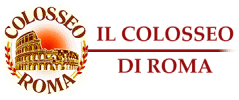The cuisine of ancient Rome
Cooking in ancient Rome: what the ancient Romans ate and where they ate throughout the day.
What did the ancient Romans eat?
The ancient Romans had three main meals: jentaculum, prandium and coena.
The three meals of the ancient Romans
he first meal corresponded, more or less, to our breakfast; it consisted of bread, cheese, milk, honey, wine and dried fruit and was eaten very quickly. Late in the morning there was another quick, cold snack of fish, bread, fruit, legumes, and wine called prandium. It corresponded, roughly, to our lunch but was so “spartan” that there was no need to set the table or even wash hands at the end of the meal. Instead, the important meal took place in the afternoon after the usual bath at the spa and sometimes lasted until dawn the next day.
The coena – dinner-initially, it was eaten in the atrium, but when houses became larger and more articulated, and especially where the wealth of the ruling class made it possible, it was held in the “triclinium”-dining room-where the master of the house had the “triclinari” – beds/sofas – arranged on which the guests could lie down. The ancient Romans, ate while lying on “triclinaria,” leaning sideways on their left arm and keeping their right arm free so they could grab food from the low tables diligently set.
The guest of honor was entitled to a place of honor, called a “consular” and was located to the right of the central “triclinar,” placed in front of the door so that a messenger could communicate, with ease, an urgent message to him. The host was to sit to the left of the guest of honor.
The wealthiest dwellings, could enjoy multiple dining rooms: the summer “triclinium,” facing north, and the winter “triclinium,” facing west, which took advantage of every last ray of sunlight. The earliest cuisine was very simple, based on grains, legumes, cheeses and fruits. With the conquest of the East it acquired distinctive flavors and aromas that to us today may seem like a mix of Eastern and medieval cuisine. The new achievements came, clearly, only to the tables of the rich.
The Roman cuisine of Marcus Gavius Apicius
What we know today comes to us mainly from the cookbook of Apicius, a well-known gastronome of the imperial age, who wrote, “
de re coquinaria
” from where we can derive the most knowledge about ancient Roman cuisine.
The main ingredient: garum
The main ingredient in Roman cuisine was the
“Garum”
a brine probably used instead of salt, which was very expensive and hard to find. Pepper, cumin, and liguistic were the most commonly used spices, and the “main dishes” were meat-based, mainly pork.
A feature of ancient Roman cuisine was the combination of contrasting flavors such as sweet with spicy or sweet with spicy. Certainly in our days the recipes of the famous cook Apicius would not be very successful while for the Romans of the time they were extremely refined and appetizing.
The poor cuisine of ancient Rome
The majority of the population, who were not wealthy, consumed much simpler meals, mainly of grains, legumes and fruits, with little meat, and certainly could not afford to carry out dinner in the “Triclinia,” let alone lying on the comfortable beds/sofas. disadvantage was to eat less, the advantage was to eat, probably, healthier without the use of condiments such as “Garum” and without the excessive consumption of meat that often, in the rich caused the disease of gout.
